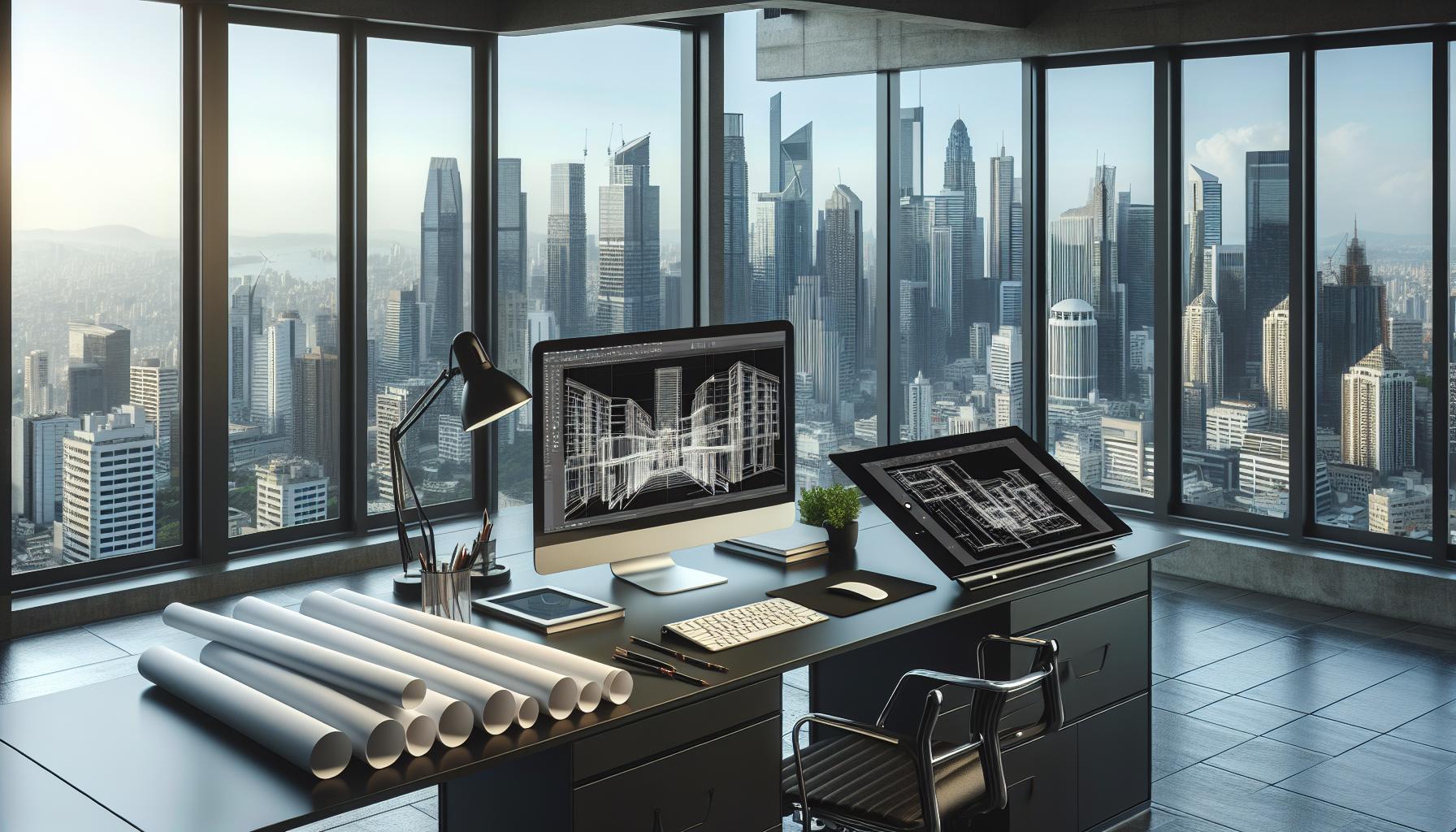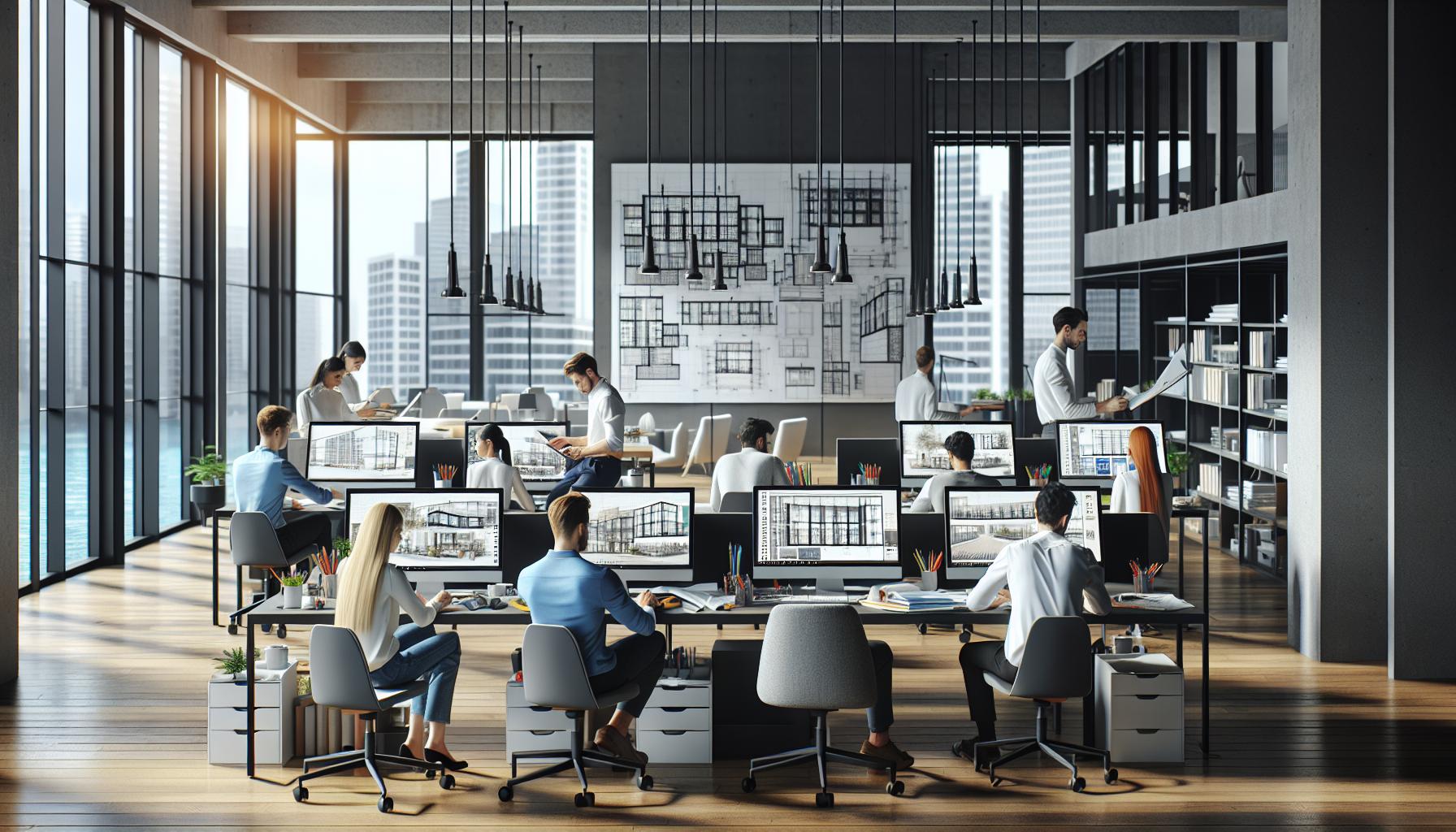In a world where creativity meets technology, finding the right architectural design software can feel like searching for a needle in a haystack—if the haystack were made of blueprints and 3D models. With so many options available, it’s easy to get lost in a maze of features and functions. But fear not! The right software can turn your architectural dreams into reality faster than you can say “open floor plan.”
Best Architectural Design Software
Architectural design software encompasses a variety of tools designed for architects and designers. These tools facilitate the creation of detailed plans, models, and visualizations, enhancing the overall design process. Options range from user-friendly programs suitable for beginners to advanced applications catering to experienced professionals.
Several types of architectural design software stand out due to their features. CAD software assists in drafting and detailing designs, supporting precision in technical drawings. BIM programs enable 3D modeling, integrating project information for better collaboration among stakeholders. Rendering software focuses on creating realistic images, helping to visualize the final look of projects.
When assessing functionality, customization options play a critical role. Different software options offer templates and libraries tailored for specific architectural styles, promoting efficiency. Meanwhile, compatibility with other tools ensures smooth project workflows and data exchange.
Cost varies significantly among architectural design software. Subscription-based models provide flexible options for agencies or freelancers, while one-time purchase software may appeal to those who prefer a single investment. Availability of free trials also allows users to explore functionalities before committing to a purchase.
Industry leaders in architectural design software include Autodesk Revit and SketchUp. Each tool presents unique strengths, catering to different project requirements. End users must consider their specific design needs and project scale when selecting the most suitable software.
Key Features to Look For

Selecting architectural design software involves considering essential features that enhance productivity and creativity. Usability, compatibility, and cost stand out as critical factors influencing the decision-making process.
Usability
Usability determines how easily users can navigate and operate software. Intuitive interfaces reduce the learning curve, making tasks more manageable. Features like drag-and-drop functionality allow for quick adjustments. Customizable toolbars enhance efficiency by placing frequently used features at users’ fingertips. Software with robust support and tutorials offers additional assistance, making it suitable for both beginners and experts.
Compatibility
Compatibility with other tools and formats often affects workflow efficiency. Software that integrates with Building Information Modeling (BIM) systems streamlines collaboration among team members. Ability to import and export various file types ensures seamless transitions across different design platforms. It also facilitates sharing projects with clients and stakeholders. Users benefit when software supports integration with rendering tools for producing high-quality visualizations.
Cost
Cost entails evaluating various pricing models before making a choice. Subscription-based services offer flexibility, enabling users to access software without large upfront investments. One-time purchases, however, appeal to those seeking ownership without recurring fees. Availability of free trials allows users to test features and functionalities. Assessing long-term value based on time saved and improved output is crucial for justifying costs.
Top Architectural Design Software Options

Various architectural design software options cater to different needs and skill levels. Here are three prominent choices each with distinct features and benefits.
Software 1: Features and Benefits
Autodesk Revit stands out as a leading BIM software known for its robust capabilities. Users can create highly detailed 3D models while collaborating seamlessly with project stakeholders. Advanced tools for structural and MEP design exist within the platform, enhancing interdisciplinary workflows. Real-time rendering features allow for quick visual updates, making presentations more engaging. Its extensive library of pre-built components speeds up the design process, saving time on routine tasks.
Software 2: Features and Benefits
SketchUp offers an intuitive interface that appeals to beginners and professionals alike. Quick, easy 3D modeling results from its user-friendly commands and extensive online resources. Users can access a vast library of extensions to enhance functionality and tailor the software to specific project needs. Design sharing is straightforward through its cloud-based platform, facilitating collaboration among teams. Visual presentations benefit from built-in rendering plugins, providing realistic shadows and textures.
Software 3: Features and Benefits
Archicad excels in providing a powerful BIM solution with a strong emphasis on architectural design. It supports multi-user collaboration through its BIMcloud technology, allowing teams to work together in real-time. Advanced visualization tools and customizable templates simplify the design process, catering to various project types. Users can automate tedious tasks through built-in scripting options, enhancing overall productivity. Integration with other design tools offers flexibility, enabling efficient import and export of files.
Comparison of Architectural Design Software

This section evaluates various architectural design software, focusing on performance and user feedback.
Performance Analysis
Top architectural design software displays varying performance levels based on functionality, speed, and resource management. Autodesk Revit excels in handling complex BIM projects, enabling smooth collaboration between team members. SketchUp stands out with its quick rendering capabilities, catering to rapid design iterations. Archicad offers powerful tools for large-scale modeling, consistently performing well even with extensive data. Metrics such as load times and responsiveness significantly impact user satisfaction. Overall, software selection should prioritize performance alongside specific project demands.
User Feedback
User feedback highlights essential insights into architectural design software usability and effectiveness. Numerous users commend Autodesk Revit for its advanced features but mention the learning curve. SketchUp garners praise for its intuitive interface, making it approachable for beginners. Archicad receives accolades for its collaboration tools, although some users express a desire for additional tutorials. Evaluating user experiences informs potential buyers about strengths and weaknesses, fostering informed decisions. Overall, user reviews should factor prominently in selecting the right software.
Choosing the right architectural design software can significantly impact the success of a project. With numerous options available each offering unique features and capabilities it’s essential to assess individual needs and preferences. Whether opting for the advanced capabilities of Autodesk Revit the user-friendly nature of SketchUp or the collaborative strengths of Archicad architects can find tools that enhance their workflow and creativity.
Ultimately investing time in understanding the functionalities and pricing models of these software options will lead to better decision-making and more successful architectural outcomes. By selecting the most suitable software architects can streamline their design processes and bring their visions to life effectively.



